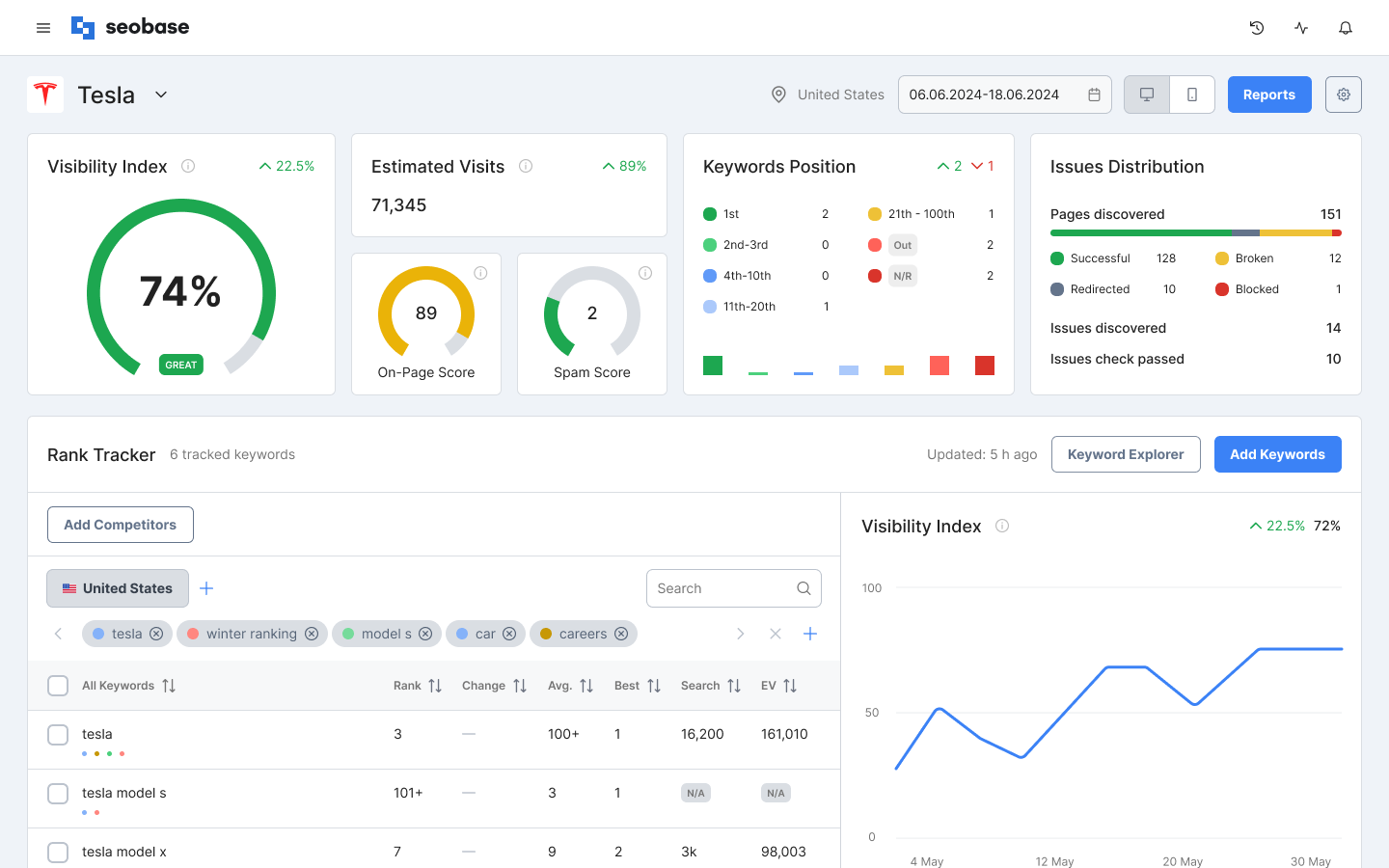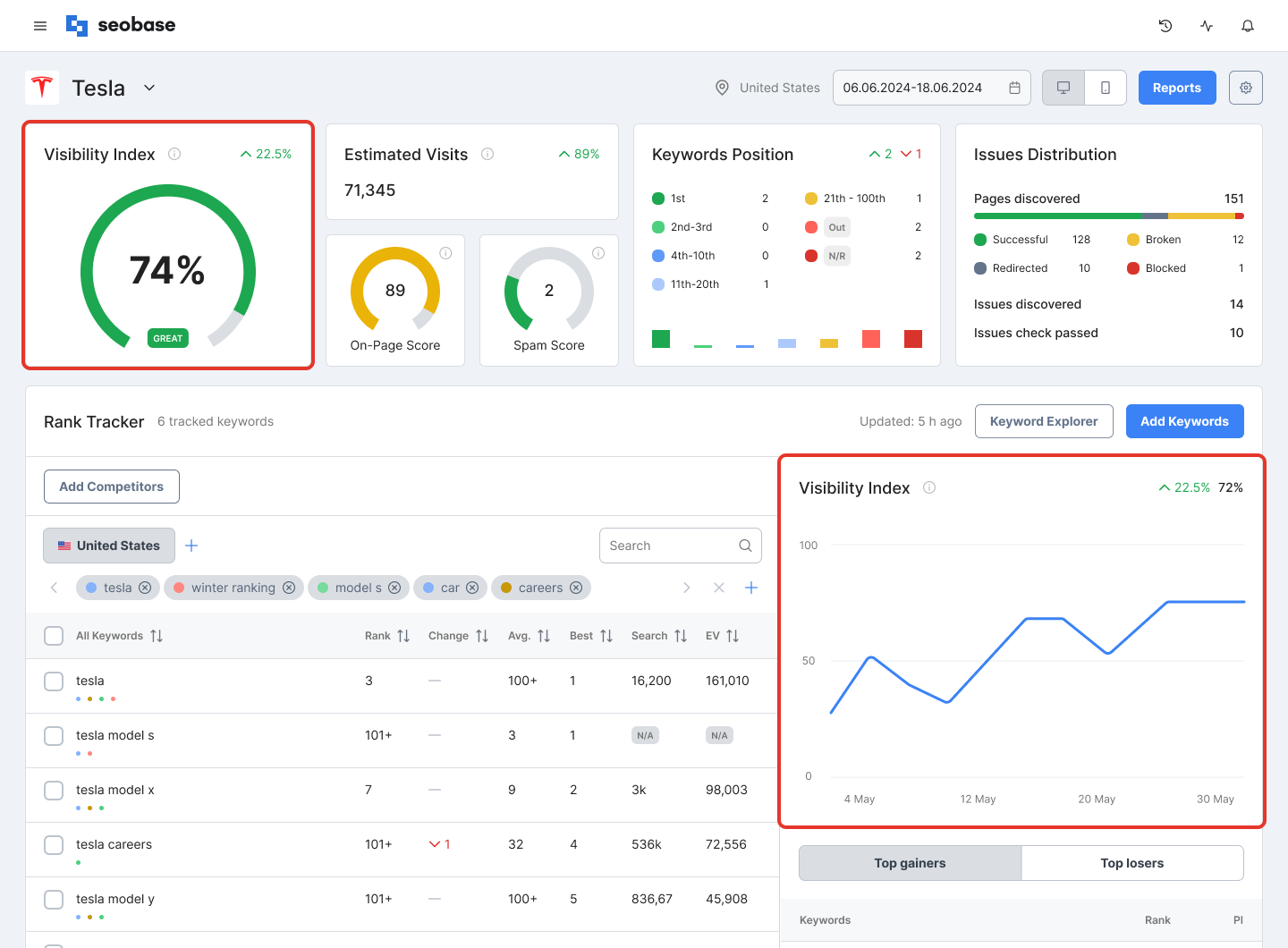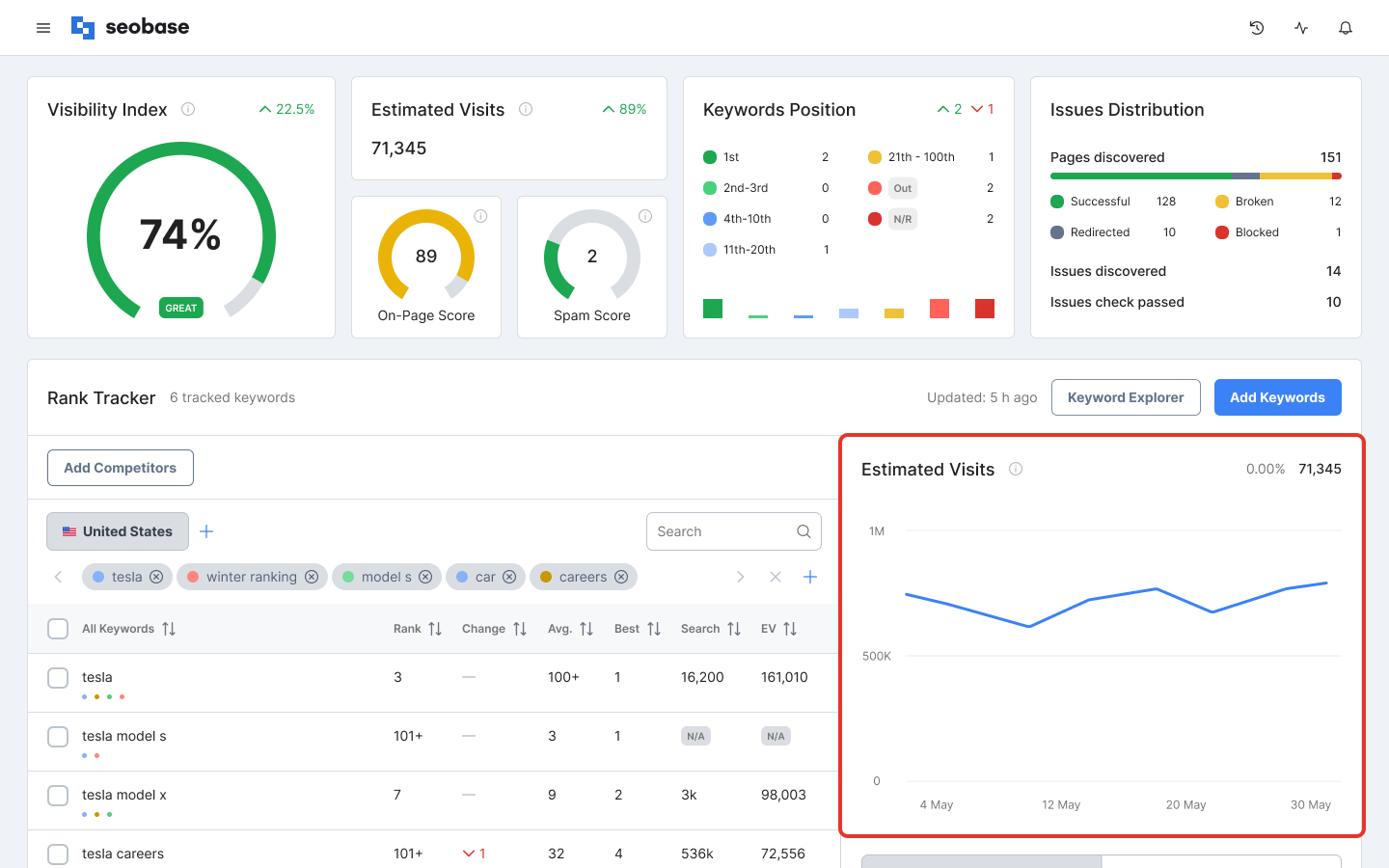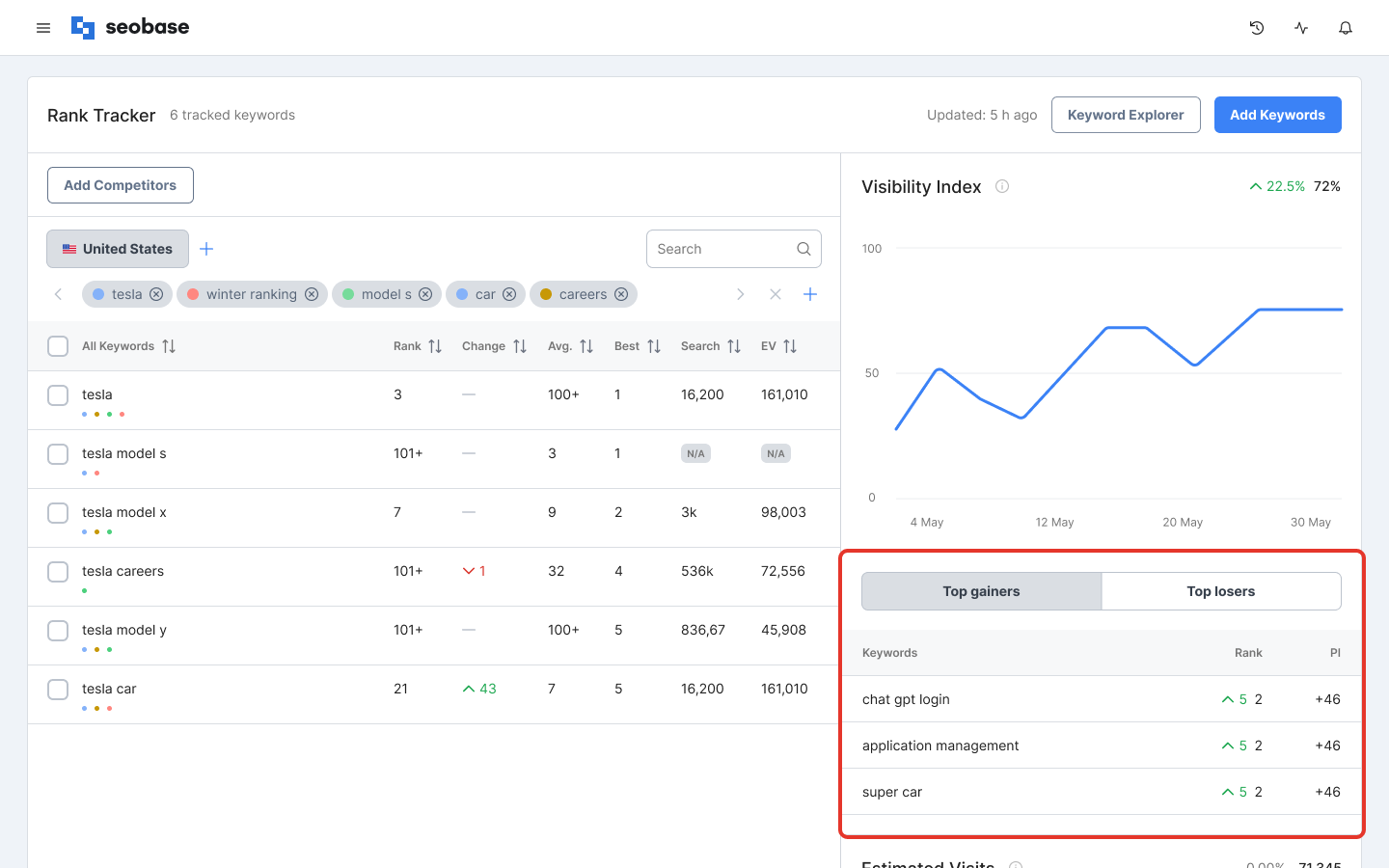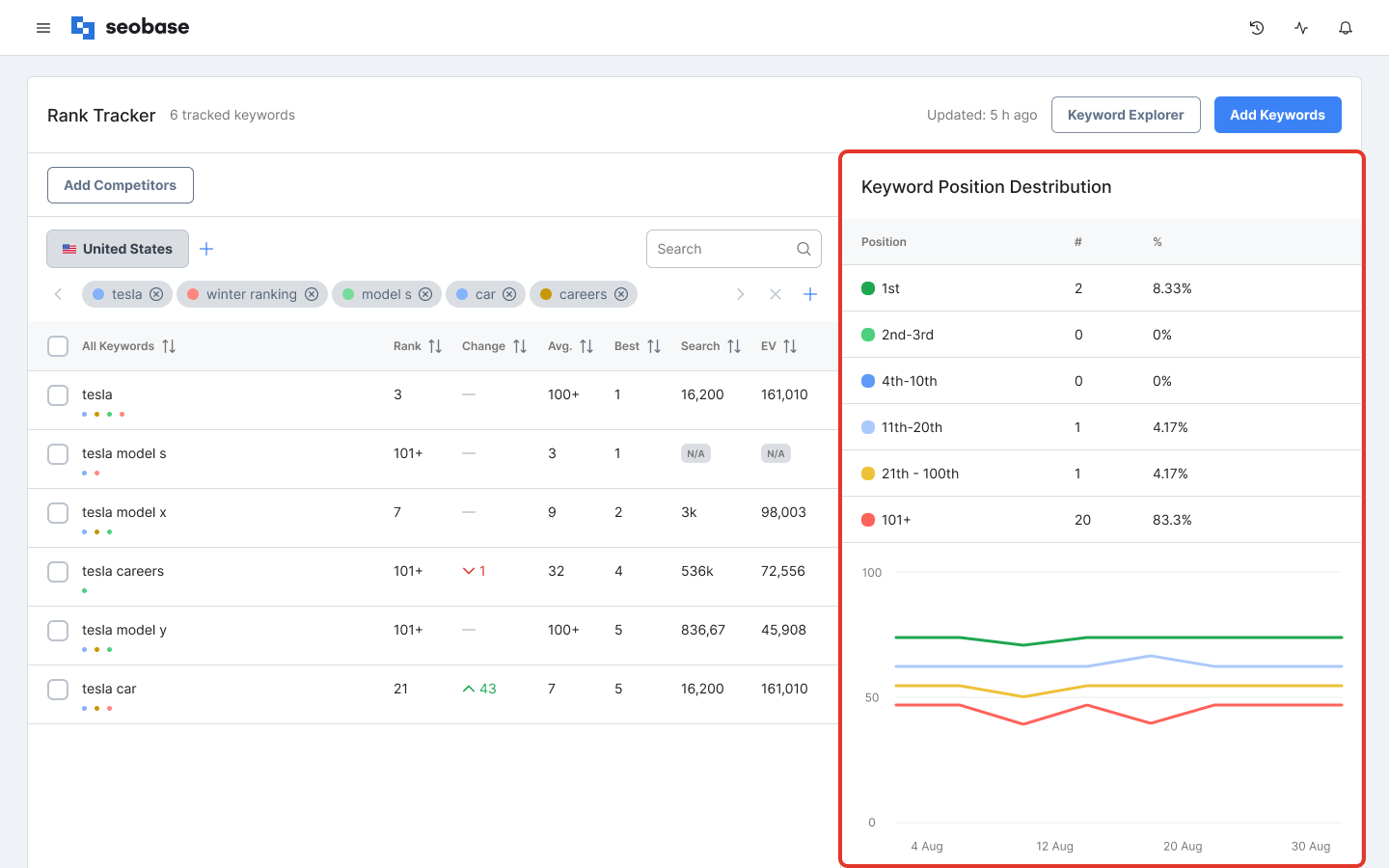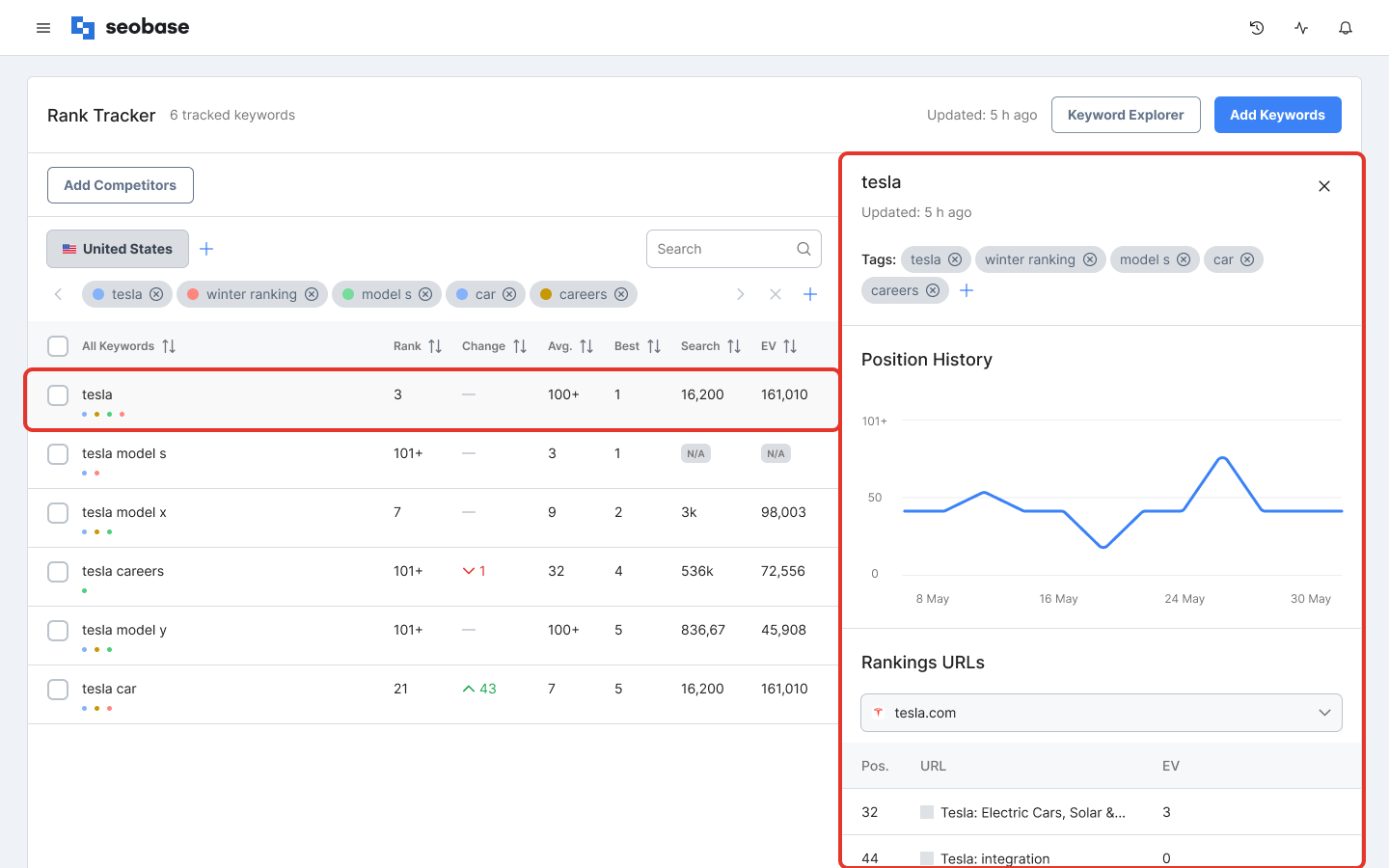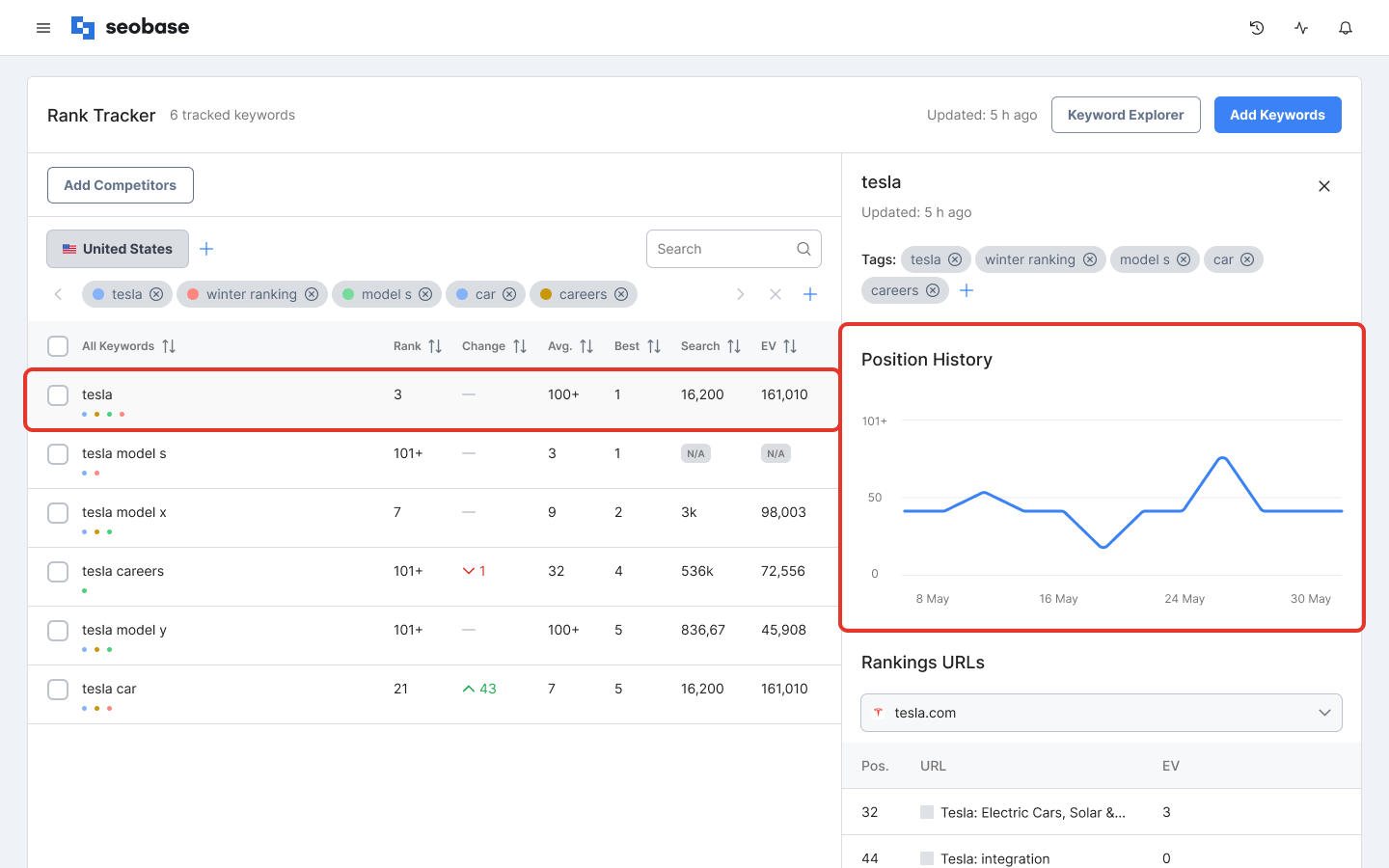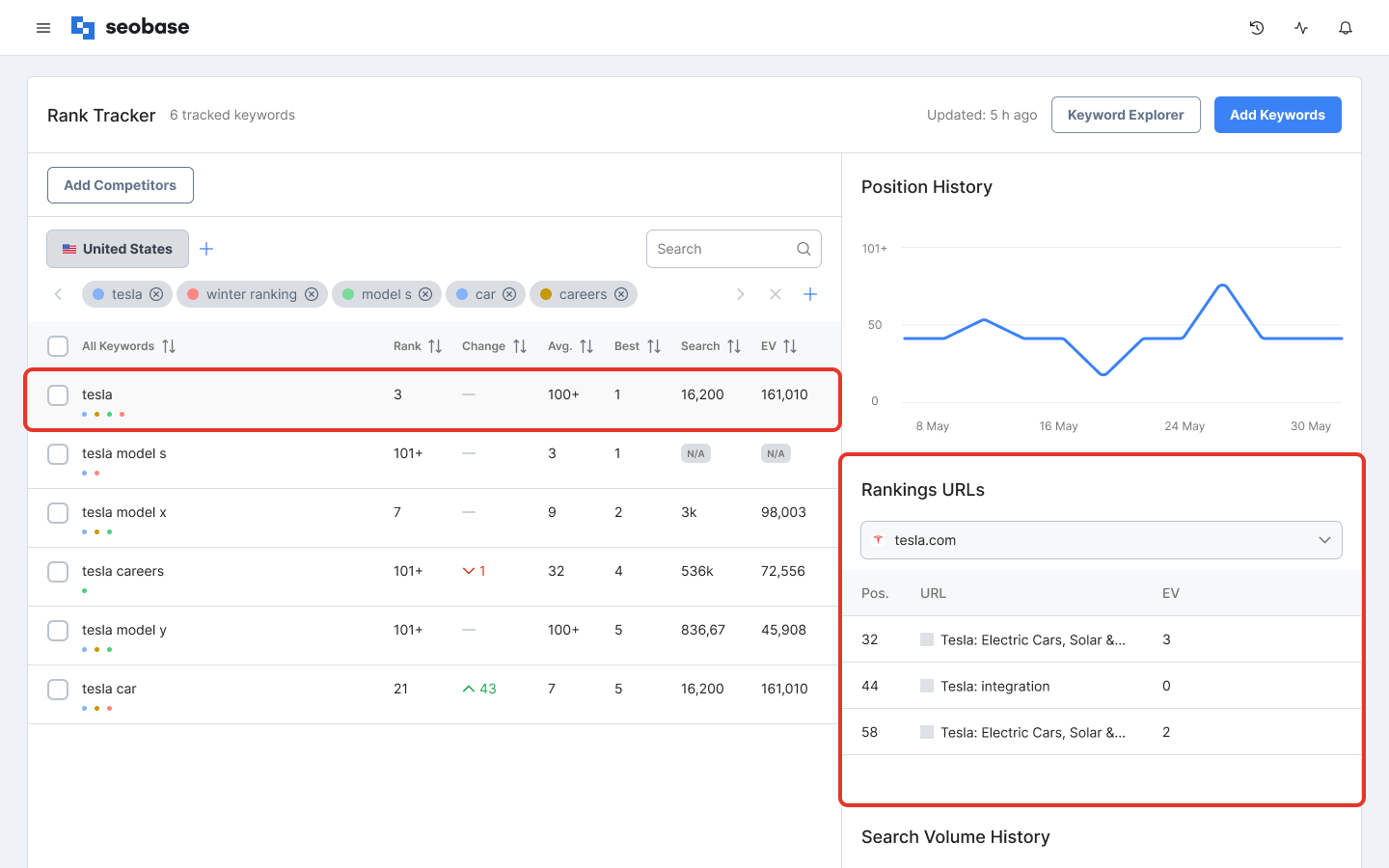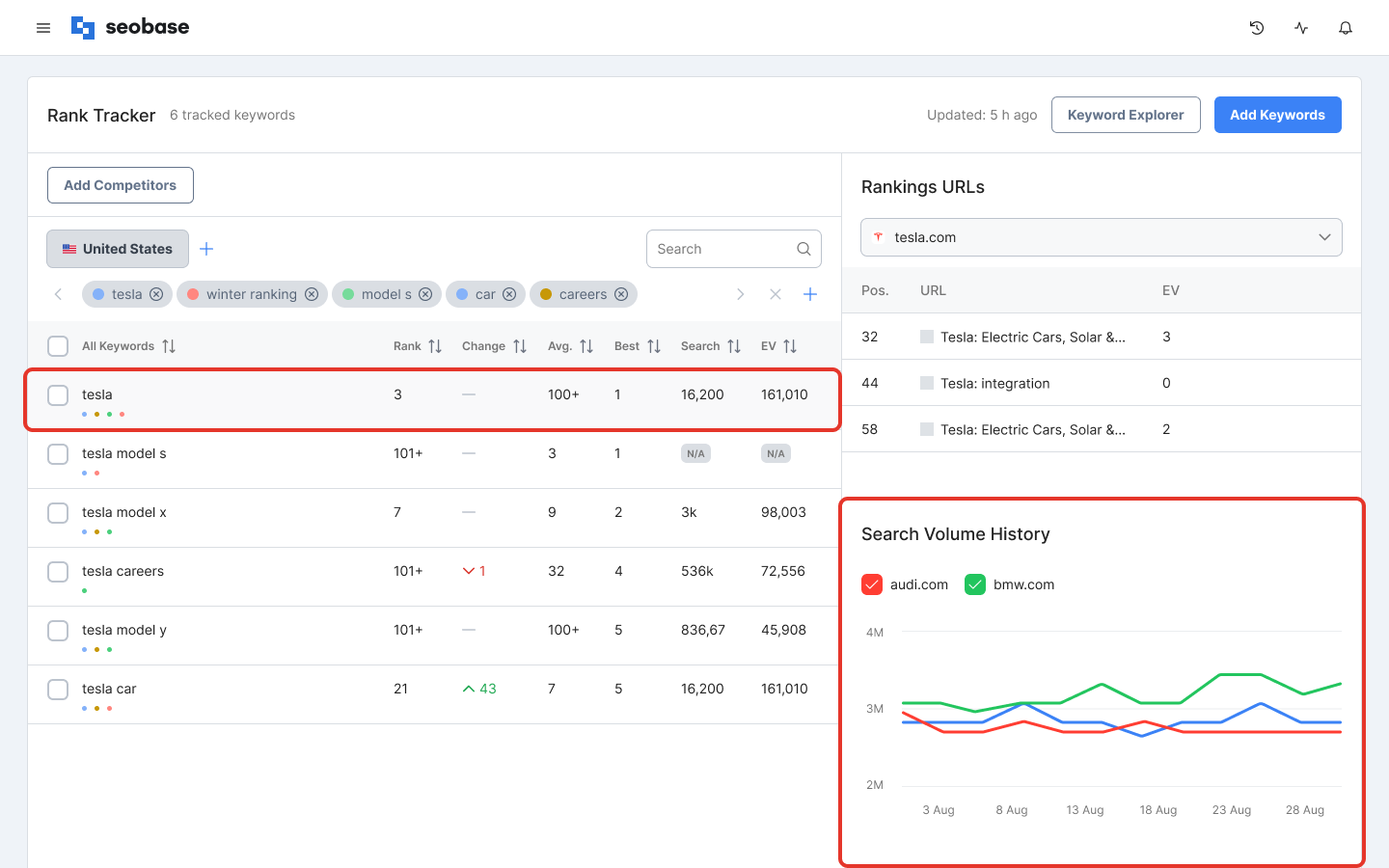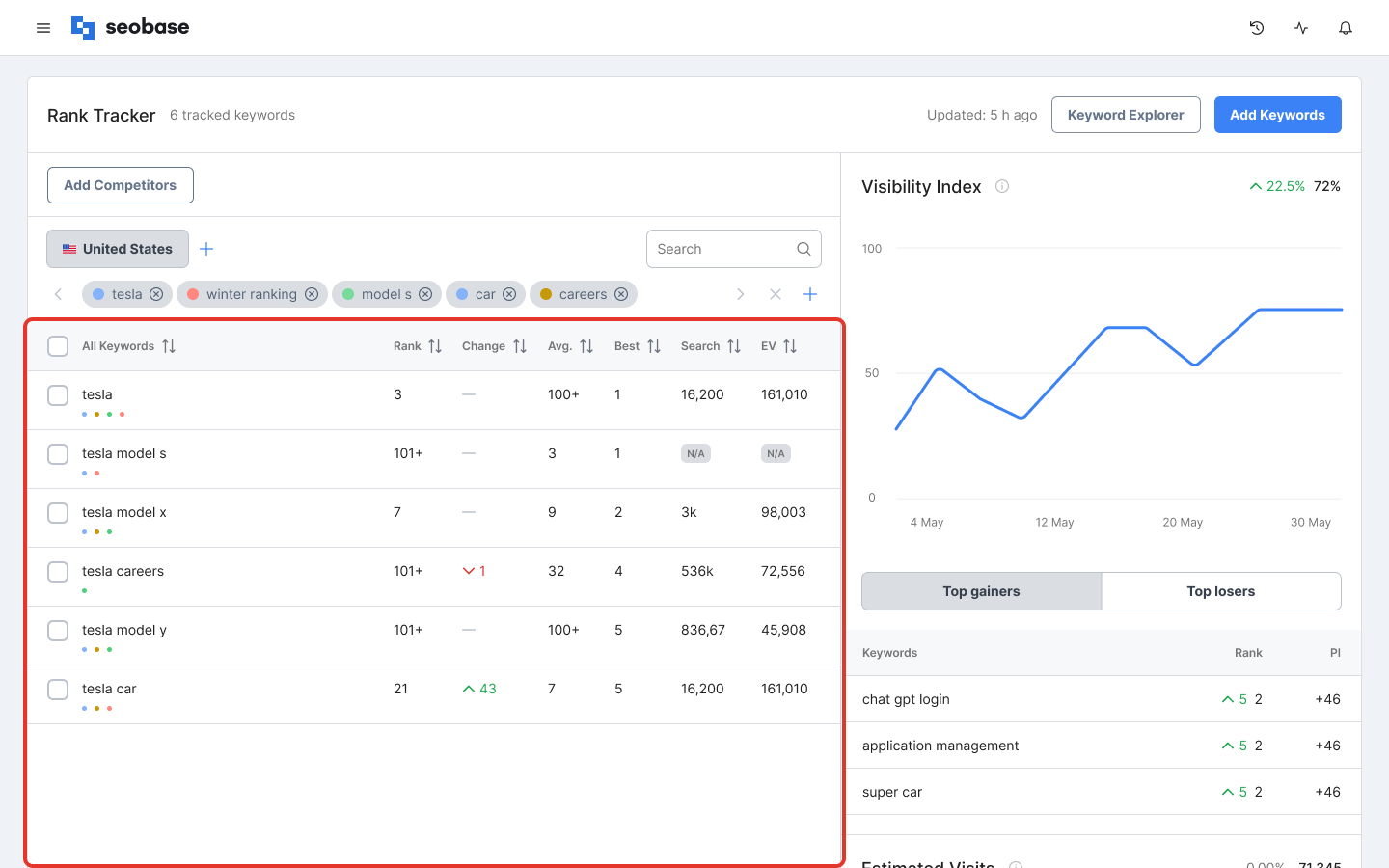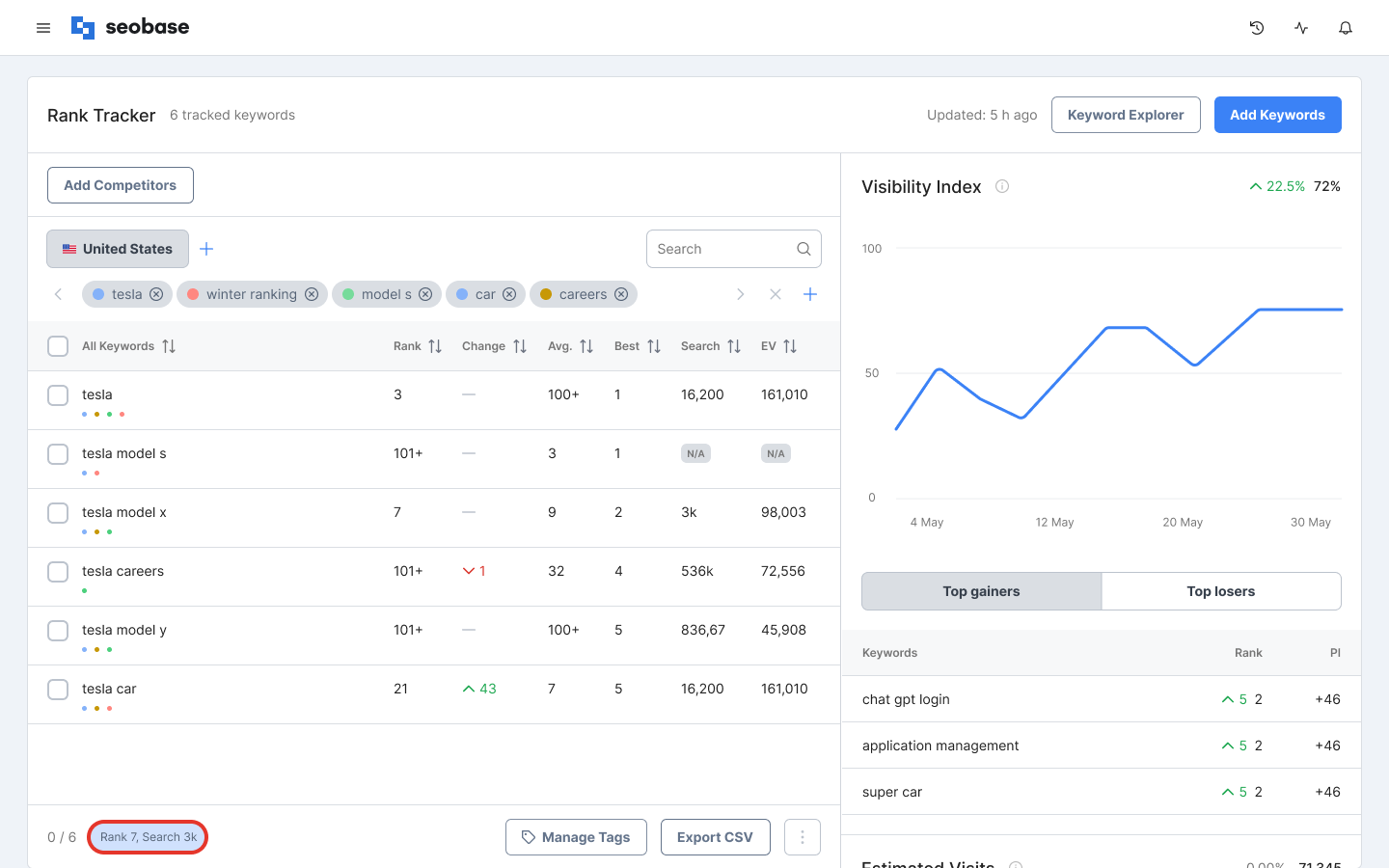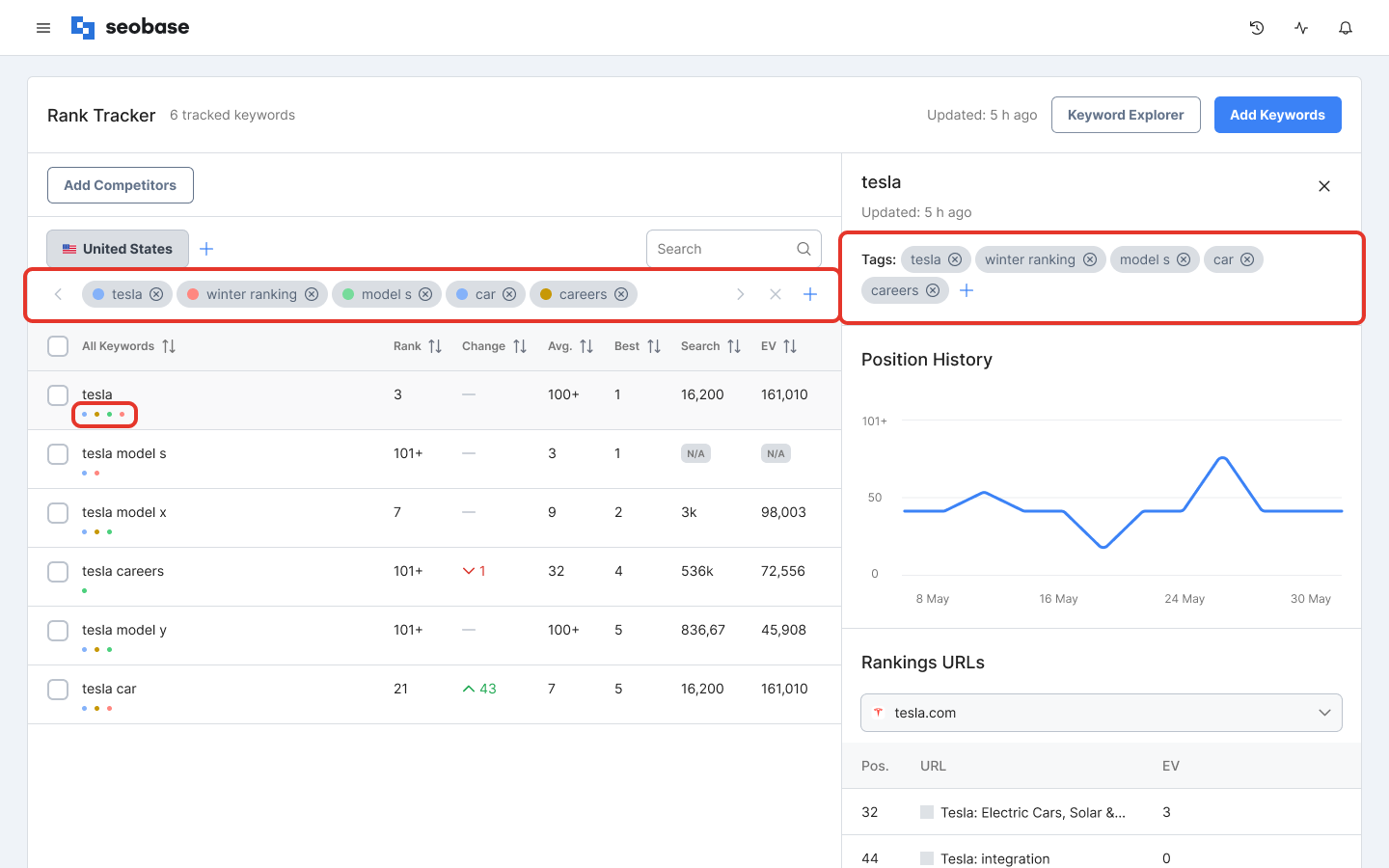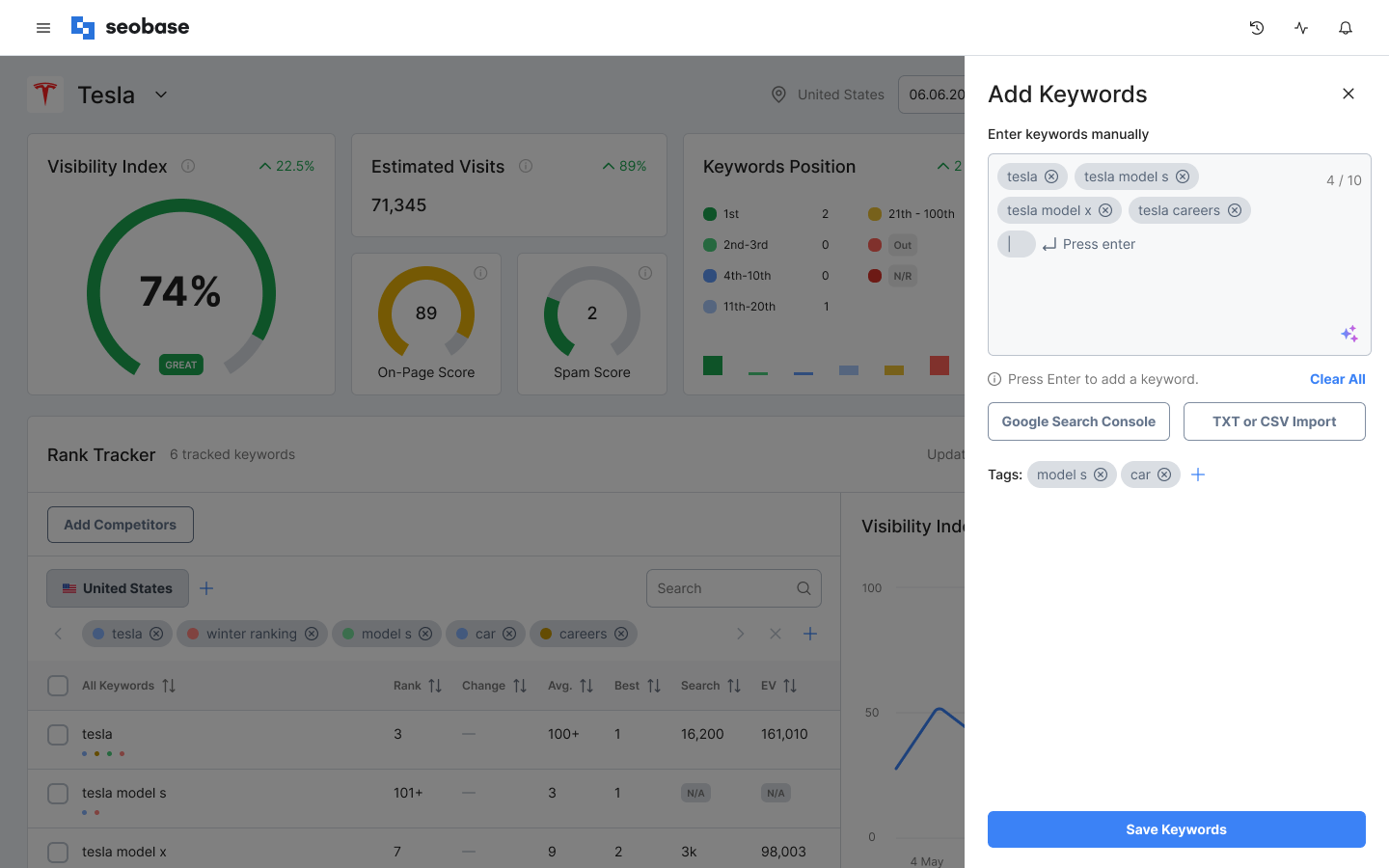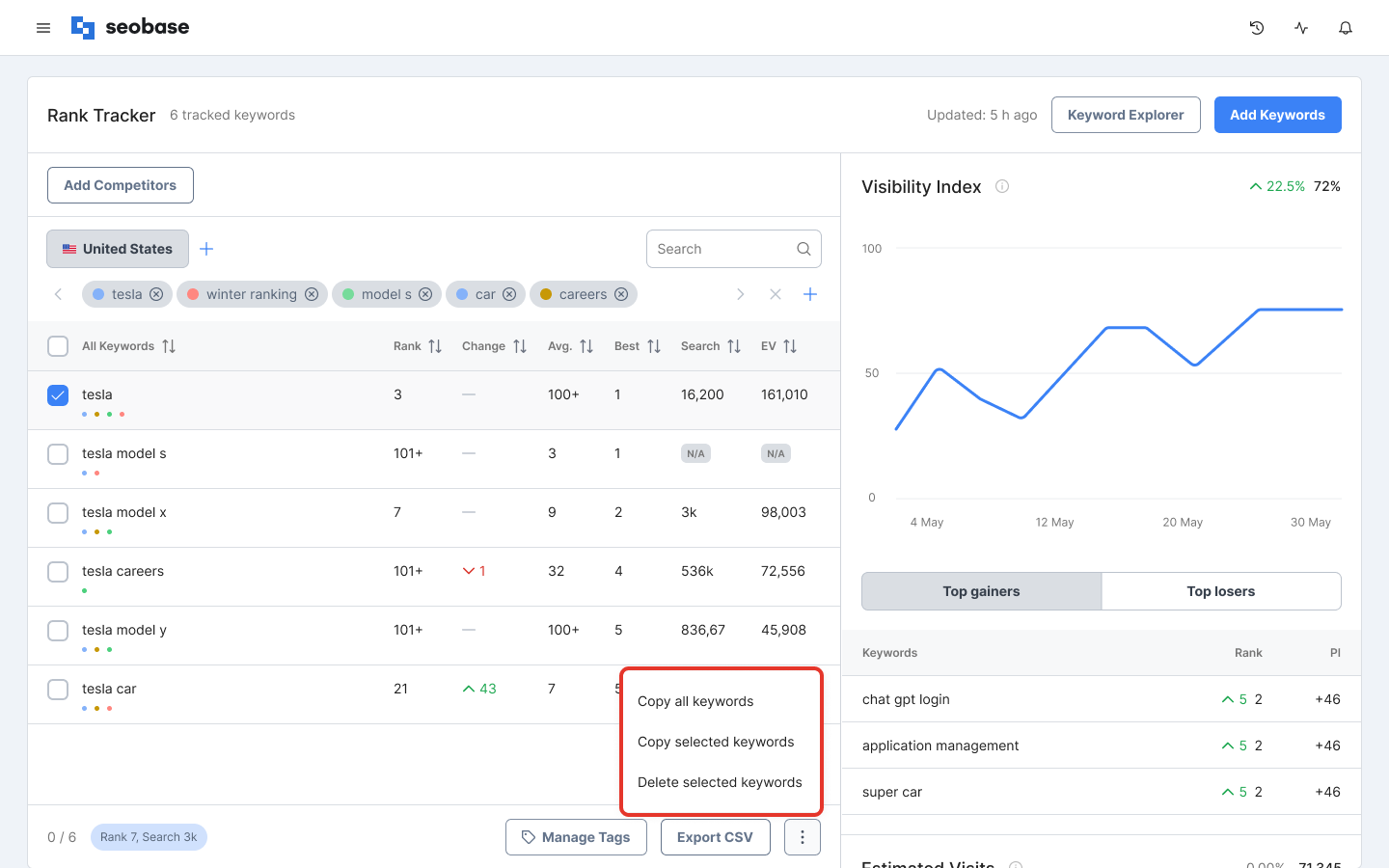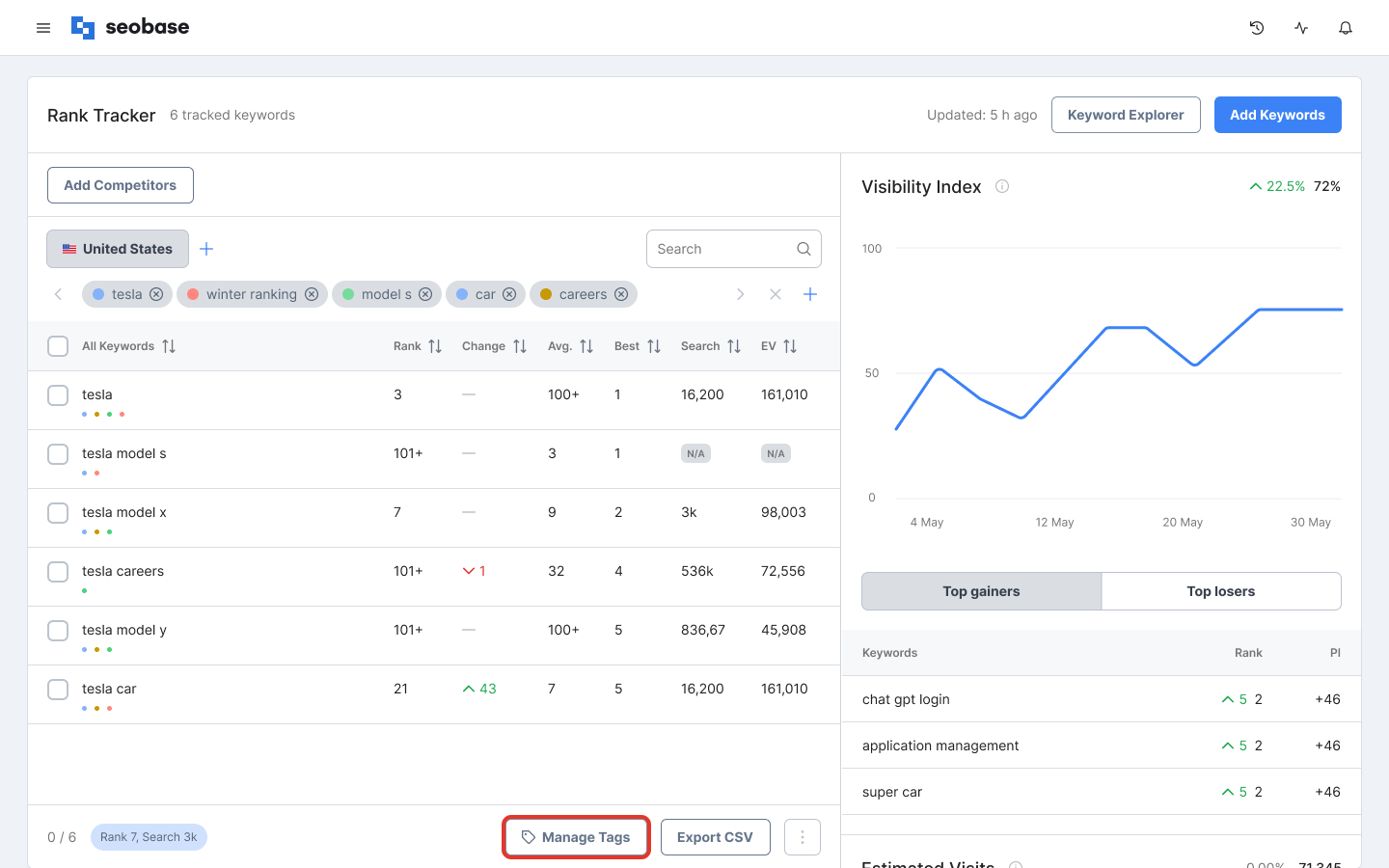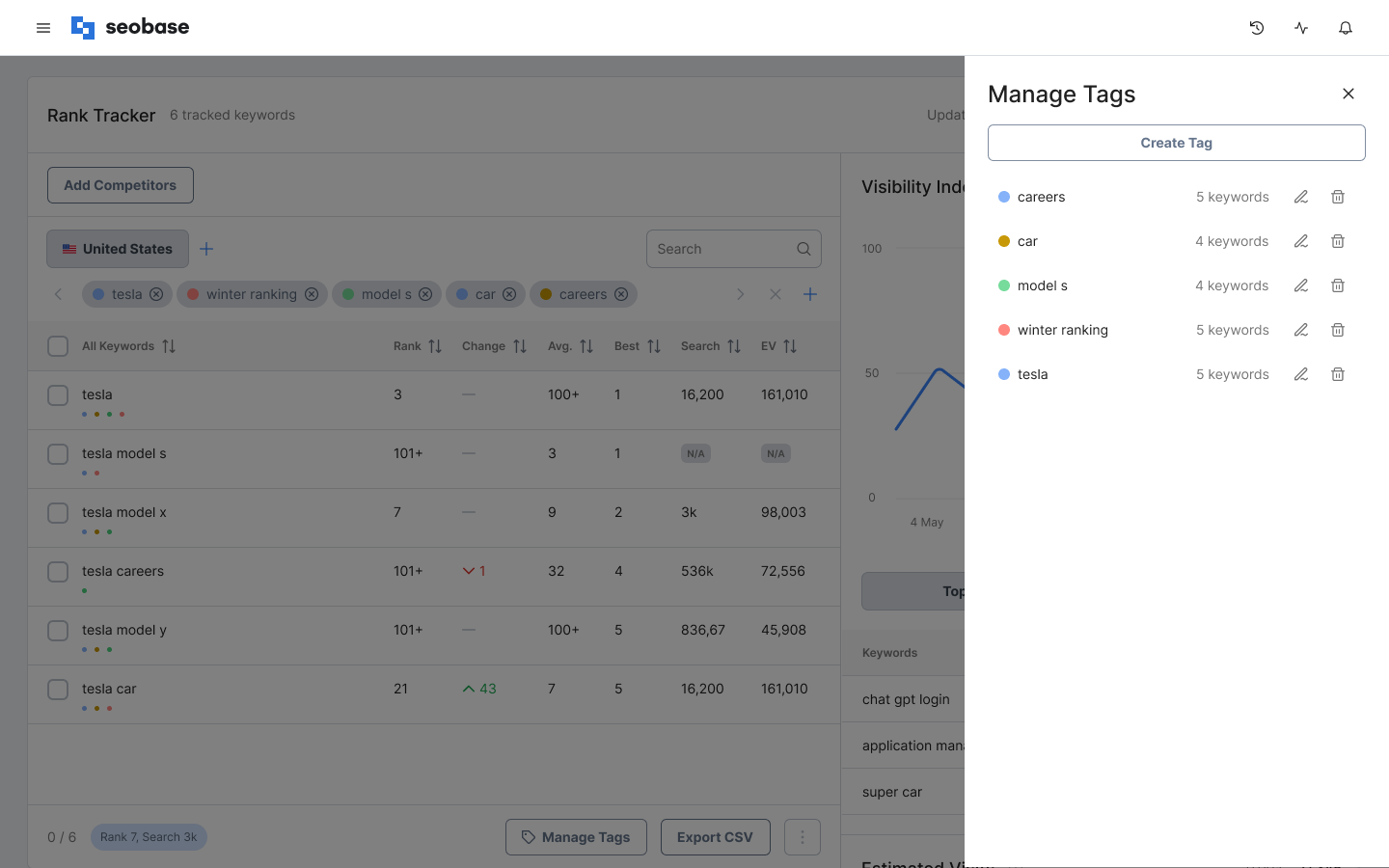How to Track and Monitor Your Metrics with Rank Tracker
In this article, we want to explain to users what the Rank Tracker Section is and how to use it, and how to understand all the metrics.
This article provides a comprehensive guide to using the Rank Tracker tool seamlessly integrated into the Project Dashboard. The article explains how to utilize Rank Tracker to monitor keyword rankings effectively.
seobase offers step-by-step instructions on setting up projects, adding keywords, and understanding the various metrics available in Rank Tracker.
Furthermore, you will find a detailed explanation of all the rank tracker metrics in the same resource. This includes keyword rankings, position changes, search volume, keyword difficulty, and SERP features.
What is Rank Tracker?
Rank Tracker is a crucial SEO tool that monitors and tracks keyword rankings in search engine results. It provides insights into keyword positions, search volume, and difficulty. Integrated into SEO project dashboards, it automates tracking once set up.
Tracking Metrics
Rank Tracker's tracking metrics include keyword positions, position changes, search volume, keyword difficulty, visibility Index, and estimated visits. These metrics provide valuable insights for optimizing keyword strategies and improving search engine visibility.
Visibility Index (VI)
The Visibility Index aggregates all your keyword ranks into one number, making it easy to understand your keywords' visibility on the search engine results page (SERP). It works because the first position in a search result is much more visible than position #25.
If your keyword is ranked number one, the Visibility Index is 100, so the lower the rank, the lower the Visibility Index.
When you add all this data together and form a moving average, you get the Visibility Index, a great way to see your keyword performance.
Remember that adding a new keyword to your tracking will lower your Visibility Index at first (since we don't know how good that keyword is yet, it will "dilute" the overall Visibility Index at this point). But in the end, if the new keyword is good (meaning it is visible and has a high rank), your VI will go up eventually.
Also, note that VI exponentially decreases as your rank position lowers. For example, if your website ranks #1 on SERP, your VI is 100. If your rank is lower and you are #2 on SERP, your VI would be 50. Thus a smaller drop in rank (from position #1 to position #2) produces a much more drastic drop in VI (from 100 to 50).
But let's say your website ranks #50 on SERP; then your VI is 5. And later, if your website ranks #80, then the VI is now only 2. Notice that a more considerable rank drop(from #50 to #80) now produces a much smaller gap in VI (from 5 to 2 only).
This happens because ranking on the first SERP earns you a much higher Visibility Index. Users are more likely to notice you when you are on the first page of search results than when you are on the sixth page, where they most likely wouldn't even go. Thus, losing these top positions will cost you more in the end.
Estimated Visits (EV)
The estimated Visits metric represents overall potential traffic from your keywords to your tracked website per month.
This metric is based on the click-through rate of a keyword's current SERP position. It also gives you an overall picture of your rankings changes on SERP.
Top Gainers vs. Top Losers
The top gainers and losers section compares keywords performing best and worst for your website.
You can also see the rank and the changes related to the best and the worst-performing keywords so that you can diagnose your SEO situation.
Keyword Position Distribution
This chart represents how many of your keywords are ranked 1st, 2nd - 3rd, 4th - 10th, 11th - 20th, 21st - 100th, and 101st+. Additionally, the table shows the percentage of estimated visits for these keywords.
Hover over the chart to see how data was distributed over time.
Keyword Detail View
To view the metrics and details of the keywords, click on any keyword in the Keyword Ranking Table.
The right part of the screen will show the keyword's related information and metrics.
Also, here you can see when the keyword was added to the tracked website when it was updated last, and you can assign existing tags to that keyword.
Furthermore, here you can see the Position History chart, the list of URLs for which the keyword is ranked, and the chart for the Search Volume History of that keyword.
Click on the "Close" button in the top right corner to close the keyword detail view section and to return the tracking metrics view.
Discover In-Depth Insights: Position History, Ranking URLs, and Search Volume History
Position History
The position history chart represents the rankings for a selected keyword over a while.
Please go to a calendar and set a different date range to see a position history during a specific period.
Ranking URLs
Ranking URLs are a list of URLs for a selected keyword. It shows you the list of URLs that influence the ranking of this keyword and the estimated visits that come from these URLs.
Search Volume History
This chart displays last year's monthly search volume numbers for a selected keyword.
These numbers give you an overall great representation of how good this keyword is, how many users are searching for it, and whether it is popular.
Keyword Ranking Table and Its Functions
The Keyword Ranking Table is a powerful tool enabling you to efficiently manage and analyze your keyword data. With this feature, you can easily track and monitor the performance of your keywords, view keyword details, and access essential keyword metrics.
Additionally, you can add or remove keywords as needed, allowing you to stay up-to-date with your SEO strategies. You are about to go through the various functions of the Keyword Ranking Table, providing insights on adding and removing keywords and understanding and leveraging keyword details and metrics.
Keyword Ranking Table
The keyword ranking table includes all keywords added to а tracked website.
The table shows columns with the following data:
Rank: this is the latest ranking position of a keyword in the system.
Change: this is a change in a keyword ranking position. We are comparing the latest ranking with the previous ranking and whether the previous one differs from the last one. You will see a dot if there is no change in the rankings.
Avg.: this is an average keyword ranking position on a given date or during the selected date range.
Best: This is the best-ranking position of a keyword on a given date or during the selected date range.
Search: this is a monthly search volume average in the past 12 months.
EV: this is the number of Estimated Visits per month on your current rank. We calculate it based on the average monthly search volume.
The Total Number of Keywords and the Number of Selected Keywords
At the bottom left of the table, you can see the total number of keywords. The first number before the slash shows the number of selected keywords in the table.
Average Rank and Search Total for selected keywords
If you select one or more keywords in the table, you will also see the Average Rank and the Search total metrics for these keywords.
Tags Assigned to Keywords
Colored dots would appear below a keyword if tags were assigned to that keyword.
You can filter keywords based on these assigned tags, which will appear as tabs right above the keywords list. Hover over the colored dot to see what tag it is.
Adding and Deleting Keywords
In this section, seobase explains how to add and delete keywords:
Adding keywords to existing trackings
You can add new keywords to existing tracking by clicking the blue "Add Keywords" button on the tracking overview page. A slideout will open on the right, and you can enter new additional keywords to your tracking. You need to separate keywords by pressing Tab or Enter as you type.
You can also import keywords from a .txt or a .csv file. Duplicate keywords will be removed automatically. You will see a notification message in the top right corner whenever a duplicate keyword is removed.
Deleting keywords from existing trackings
You will need to do the following to delete keywords:
Go to the tracking overview page.
Select one or multiple keywords that you want to delete.
Notice that the "Delete Keywords" button at the top of the list becomes active once you select keywords.
Click on it to delete keywords.
Note: all the data and metrics accumulated in the system for the keyword(s) you are deleting will be permanently removed.
Managing and Filtering Keyword Tags
Tagging keywords helps categorize and keep them in groups, mainly if you track multiple keywords under the same tracking. You can categorize them, for example, by blog posts or campaigns or product groups, services, etc.
How to create tags
Go to the tracking overview page and click the "Manage Tags" button at the top of the keyword ranking table.
2. A slideout will open on the left. Click on the "Create Tag'' link, enter your tag's name, and select a color by clicking on the pink dot if you wish. Then click the blue ''Add'' button to create your tag or the gray “Cancel” button to abort the process.
How to assign tags to keywords
Go to the tracking overview page and click the "Manage Tags" button at the top of the keywords table.
Create a tag if you don't have any.
Click on the "Add keywords" link to the right of the tag's name, and a panel with all existing keywords will open on the right.
Select any or all keywords you wish to assign to this tag. Click on the blue "Save" button at the bottom of this panel.
Once tags are assigned, they become visible in the keywords list as colored dots below each keyword they are assigned to. Hover over each dot to see the tag's name in a tooltip.
How to unassign tags from keywords
Filtering Keywords by Tags
Once tags are created and assigned to keywords, they appear as tabs above the keywords list.
To filter for keywords with the assigned tag, click on a desired tag above the keyword list in the Keyword Ranking table.

